By Jamie Brettle, Embedded Software Product Manager, National Instruments
Today, a key task for innovators is to test and validate ideas quickly, and beat your competition to market.
The Internet enables us to easily share data and connect with others using text, image, music and video. Each year, as bandwidth and computing power increase and networks become more available, sharing ideas becomes easier, faster and cheaper. As ideas are so freely transmitted, we are presented with more ideas than we, as engineers, could possibly come up with on our own. But turning ideas into reality is where the cost comes in – and it is usually an expensive price tag. In an age where ideas are produced cheaply, innovators become the people who can test and validate ideas quickly, enabling them to not only determine profitable ideas, but also release products to market faster than the competition.
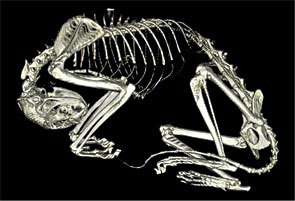
Animage LLC used prototyping to demonstrate their imaging algorithms on a bench-top device before finalizing their design.
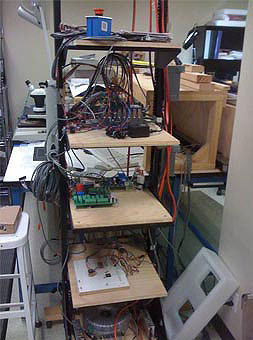
Prototyping is an often overlooked or underinvested step in product development; however it can be a serious competitive advantage in research-intensive industries such as medical device and robotic design. If you can demonstrate your capabilities and get a prototype into the investor or customer’s hands to achieve real feedback on the value of your innovation, the probability of business success greatly increases. If you want to stay ahead of your competition and move your idea out of your head, develop a prototype with the following guidelines in mind.
Reduce cost and risk: Prototyping reduces the cost of developing an idea by minimizing the end product to a set of features and requirements indicative of the final design. The goal of prototyping should be to quickly provide a proof of concept demonstrating functionality that will be examined and evaluated by customers, clients and definitely the design team itself. By developing this proof of concept, your engineering team can prove the validity of their ideas though software algorithms and hardware designs. Two objectives will determine which elements to include in a prototype – feasibility testing and customer feedback. Feasibility testing allows the engineering team and investors to understand the risks associated with the development process, while customer feedback will provide valuable insight on how to revise your design to meet the market’s needs. However, remember not to fall in love with the process of prototyping and iterating. The point of prototyping is to put in just enough work to meet your design objectives.
Fight “reversion to the mean:” While it is important to put in just enough work while prototyping, don’t fall into the trap of developing something that is too simple and will generate little interest, rather than delivering a functional prototype that maintains the “wow” factor of the idea. By staying true to the original vision, you can develop a prototype that separates them from the masses by capturing the original thought of the innovation. The “wow” factor can be an impressive user interface or a breakthrough in processing capabilities. It is what will attract potential customers, investors and other engineers that will take the product from lab to market.
Animage for vets: Being able to quickly create an impressive user interface coupled with advanced imaging algorithms and a mechanical system helped Animage LLC. “wow” prospective customers when developing their prototype Fidex system. Fidex is a multimodality diagnostic imaging system for small animal veterinary practices. The competitive advantage for Animage was their expertise in algorithm development for imaging products such as cone-beam computed tomography (CT) scans. They decided to expand into hardware system design to create a revolutionary three-in-one imaging system for the veterinary market to provide high-quality images to improve animal treatment.
Their prototype was a bench-top imaging system that could control an X-ray source, X-ray detector and motion system, demonstrating their imaging algorithms running on an embedded system with a rich user-interface. This functional prototype successfully demonstrated the feasibility of the product idea. Using this initial bench-top prototype, Animage was able to create several other pre-production units to conduct clinical trials. Through clinical trials, Animage anticipates additional requirements to be uncovered, which they prepared for by creating a flexible and reconfigurable design.
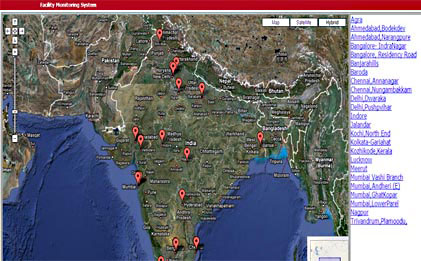
Developing modular prototypes enabled Saara Embedded Systems Pvt Ltd to customize their front-ends depending on customer requirements including Web based front ends.
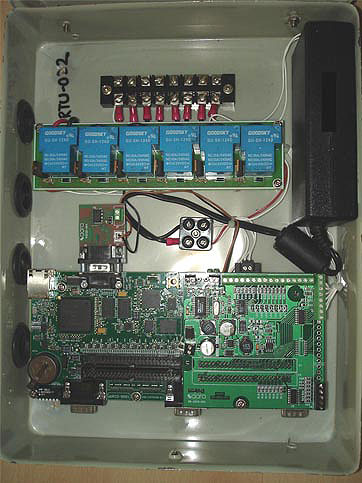
Saara for power control: As Animage pointed out with their Fidex prototype, requirements and features are bound to be uncovered as the idea progresses from prototype to product. With this potential for course correction, it is important to design your prototype with modularity in mind. Great prototypes are often scalable, meaning you can quickly adapt them to meet customers’ unforeseen needs. Develop your prototype with the capability for expansion, increased performance and a number of packaging options.
Take for example Saara Embedded Systems Pvt Ltd, who created a rugged and flexible embedded power monitoring and control system for monitoring and reducing the energy consumption of large facilities. Their system provides real-time access to parameters from diesel generators, HVAC, signage boards, security systems and refrigeration equipment allowing customers to monitor and control different points on their infrastructures effective energy consumption and optimization.
The dynamic nature of this project required a scalable solution to communicate over a variety of protocols, with a number of sensors and remote monitoring interfaces. By choosing a modular, open, and flexible platform to develop their product, Saara Embedded Systems was quickly able to prototype their system and add features dependent on their customers’ needs – whether that was communicating over a proprietary protocol or creating custom web-based interfaces to Google maps. Saara Embedded Systems estimated that by using rapid prototyping techniques, tools and scalable software architectures using NI LabView graphical programming, they would be able to save six months of development time. Instead of designing custom hardware components, Saara Embedded Systems turned to commercial off the shelf (COTS) hardware to quickly turn an idea into a functional prototype.
Avoid focusing on cost too early. COTS hardware, such as NI CompactRio, enables you to focus on system design and feasibility when creating a prototype, rather than spending that time optimizing for cost as you would with a custom design. For hardware designs, a potential time sink and pitfall is getting caught up in endless cost optimization analysis during the early stages of your prototype design, whether that is picking the most cost-efficient processor architecture or even determining which case manufacturer. Even though cost is always important, your goal with a prototype is to be within striking distance of a profitable design. Initially, focus on proving the value of your innovation and design with modularity in mind. Focus on securing your first set of customers and then work on cost optimization. Developing software for custom hardware devices can increase the time spent writing software by creating board support packages, integrating development environments and debugging efforts. Using COTS hardware solutions can reduce this time by providing an integrated middleware and development environment.
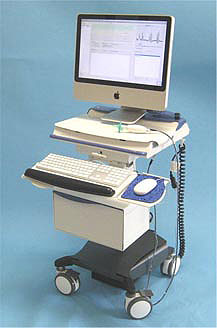
Avoid focusing on reducing cost too early. KC Biomedix Inc.prototyped their design using COTS hardware to quickly develop their NTrainer System.
KC BioMediX Inc for preemies: A start-up medical device company based in Shawnee, Kansas, is a great example of a company focused on the goal, not on cost, during the earlier stages of development. They developed a product called the NTrainer System that helps premature babies learn to oral feed and greatly increase their chances for survival. The device is essentially a computerized pacifier that makes the tip of a pacifier pulse with gentle bursts of air. Doctors or nurses can use the device to get a far more accurate assessment of a baby’s feeding ability, and then begin therapy to help the baby learn to suck. KC BioMedix quickly developed an embedded solution for medical trials, while focusing on reducing development time as opposed to system cost. As volume increases KC BioMedix will aim to reduce the system cost.
Ensure you can demonstrate your prototype: The prototype should be easy to demonstrate and visualize. With customers, venture capitalists and potential employees, you want to start strong and show the most amazing capabilities and unique innovations first. The key to any prototype is to make it functional and have the ability to show off the best qualities of your idea. Being able to impress your potential customers and investors with quality user interfaces, data visualizations or simulations cannot be underestimated, especially when tackling a challenging problem by providing a working version that can be touched, tested and critiqued. Using high-level software tools like NI LabView enables developers to rapidly prototype software that interfaces with a variety of hardware. If a company produces an amazing demo, the challenges of bringing a product to market suddenly become a whole lot easier.
Discuss this on the Engineering Exchange:

National Instruments
www.ni.com
Links to Case Studies:
-– Animage, LLC: “Developing a Revolutionary Veterinary Imaging System Using NI LabVIEW and RIO Technology” Video: “Innovation”
-– Saara Embedded Systems Pvt Ltd: “NI Single-Board RIO Embedded Control System Reduces Energy Consumption by 15 Percent”
-– KC BioMediX Inc: “Using Graphical System Design to Rapidly Develop a Low-Cost Device for Helping Premature Infants Learn to Oral Feed”
Filed Under: Software • 3D CAD, Digital manufacturing, ENGINEERING SOFTWARE, Materials • advanced

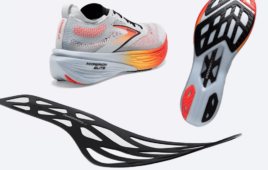
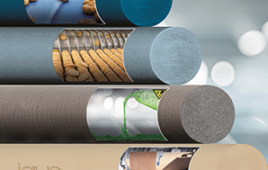
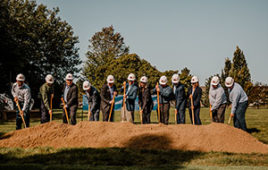
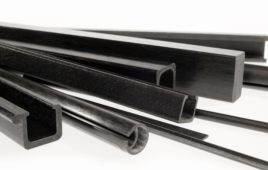
Tell Us What You Think!